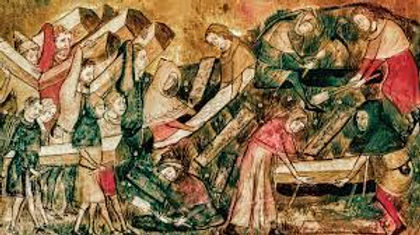By: Vivian She
Last Wednesday, a group of researchers discovered a key clue to the origins of the Black Death in Issyk-Kul, Kyrgyzstan, where they found plague bacteria DNA in the teeth of skeletons buried in 1338.
The Black Death is an infamous plague that killed more than 60 percent of the population of Eurasia during the 14th century. After contracting the plague, black spots appeared on the victims’ bodies, thus giving the plague its name. Giovanni Boccaccio, an Italian writer and poet who lived through the plague, described the symptoms as “signs of impending death”.
The Black Death is caused by a bacterium called Yersinia pestis. This bacterium is carried by fleas which passed the disease to the rodents they lived on, who then passed it to humans.
An investigation led by Wolfgang Haak and Johannes Krause of the Max Planck Institutes for Evolutionary Anthropology and the Science of Human History in Germany as well as Philip Slavin of the University of Stirling in Scotland have recently found plague DNA in the teeth of three skeletons in Kyrgyzstan. Their tombstones were dated around 1338 and marked their owners’ cause of death as “pestilence.” The date marked on the tombstones was just a few years before the Black Death came to Europe. This could well be the place where the Black Death originated, further proven by the fact that rodents in that area of Kyrgyzstan today carry a strain of Y. pestis that derives directly from the original strain.
According to Gina Kolata in the New York Times, “the group has analyzed genetic material from plague victims at other sites, building a DNA family tree of the plague bacteria variants.” The DNA family tree started out as one major strain but then erupted into four branches of Y. pestis. The descendants of these four strains are still found today in rodents.
Based on this research, it seems that the Big Bang—a nickname for the first appearance of the Black Death—happened right before the disease became prevalent in Eurasia, meaning that the plague was most likely spread through trade routes and not military actions from a century earlier, as other historians have suggested.
Link to article:











